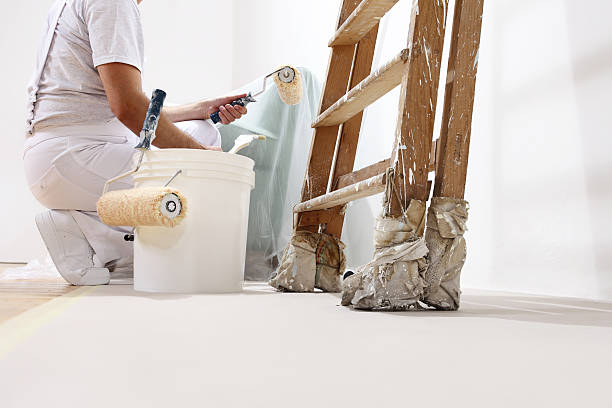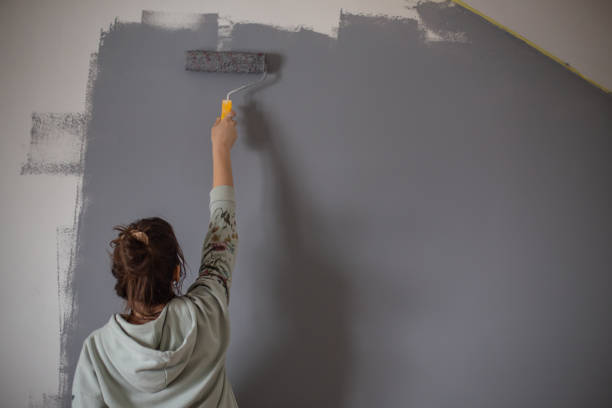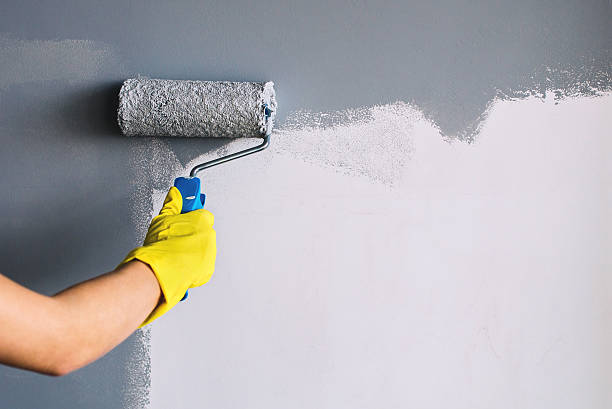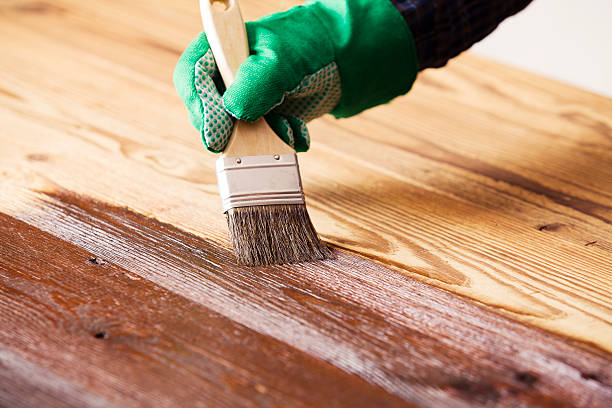

Choosing the right paint colors for your space can sometimes feel like a daunting task, but it doesn't have to be. With a little bit of planning and consideration, you can easily find the perfect colors to enhance the look and feel of your home.
One important factor to consider when choosing paint colors is the overall aesthetic you want to achieve in your space. Are you going for a cozy and inviting vibe, or do you prefer a more modern and minimalist look? By determining your desired aesthetic, you can narrow down your color options and make the decision-making process much easier.
Another key consideration is the natural light in your space. Natural light can greatly affect how paint colors appear on your walls, so it's important to take this into account when selecting colors. If you have a room with limited natural light, opting for lighter shades can help brighten up the space and make it feel more open and airy.
It's also helpful to consider the existing elements in your room, such as furniture, flooring, and decor. Choosing paint colors that complement these elements can create a cohesive and well-designed look throughout your space.
Finally, don't be afraid to test out different paint samples before making a final decision. Painting small sections of your walls with sample colors can give you a better sense of how they will look in your space and help you avoid any potential regrets.
Overall, choosing the right paint colors for your space is all about finding what speaks to you and enhances the overall atmosphere of your home. By taking these factors into consideration and trusting your instincts, you'll be able to create a beautiful and personalized space that truly reflects your style.
When it comes to painting the interior of your home, one of the most important steps is preparing the walls before you even pick up a paintbrush. This step may seem tedious, but it is crucial for achieving a smooth and professional-looking finish.
Before you start painting, make sure to inspect the walls for any imperfections such as cracks, holes, or peeling paint. These issues should be addressed before you begin painting to ensure that the final result is flawless. Fill in any cracks or holes with spackling compound and sand down any rough patches to create a smooth surface.
Once you have addressed any imperfections, it is time to clean the walls thoroughly. Dust and dirt can prevent paint from adhering properly, so be sure to wipe down the walls with a damp cloth or sponge. Pay special attention to areas that are prone to collecting dust such as baseboards and corners.
After cleaning, it is important to prime the walls before applying paint. Primer helps seal the surface and provides a better base for the paint to adhere to. This step can also help hide any stains or discolorations on the walls.
In addition to priming, consider using painter's tape to protect trim and edges from accidental splatters of paint. This will help achieve clean lines and a polished look once the project is complete.
Taking the time to properly prepare your walls before painting may seem like an extra step, but it will ultimately save you time and frustration in the long run. By following these steps, you can ensure that your interior painting project goes smoothly and results in a professional-looking finish that will last for years to come.

When it comes to painting a room, there are different types of paint finishes that can be used depending on the desired look and functionality.. Each type of finish has its own unique characteristics and uses, making it important to choose the right one for your specific project.
One common type of paint finish is matte or flat.
Posted by on 2024-04-25

Are you looking to transform your Overland Park home with a fresh new look?. Professional residential painting can make a world of difference in the appearance and feel of your living space.
Posted by on 2024-04-25

Painting can be a fun and rewarding project that can instantly transform the look and feel of your space.. Whether you're painting walls, ceilings, or trim, there are some tips and tricks to keep in mind to ensure a professional-looking finish.
When it comes to painting walls, preparation is key.
Posted by on 2024-04-25

One of the most popular and rewarding home improvement projects is DIY home painting.. Whether you are looking to freshen up a room with a new coat of paint or completely transform the look of your home, mastering the art of DIY home painting can save you money and give you a sense of accomplishment.
If you live in Overland Park, Kansas, there are some important things to consider before starting your DIY painting project.
Posted by on 2024-04-25
One of the best techniques for achieving clean and crisp lines when painting interiors is to use painter's tape. This handy tool can make a big difference in the final outcome of your paint job, giving you professional-looking results without the need for a steady hand or years of experience.
When using painter's tape, it's important to prepare the surface properly before applying the tape. Make sure the area is clean and dry, and use a gentle cleaning solution if necessary to remove any dirt or grease that could prevent the tape from sticking properly. Once the surface is prepped, carefully apply the tape along the edges where you want to create clean lines. Press down firmly on the edges to ensure a tight seal, and be sure to remove any air bubbles that may form.
Once your tape is in place, you can start painting with confidence knowing that your lines will come out sharp and precise. When painting near the taped edges, be careful not to overload your brush or roller with too much paint, as this can cause bleeding under the tape. Instead, apply thin layers of paint evenly across the surface until you achieve full coverage.
After you've finished painting and allowed the paint to dry completely, it's time to remove the painter's tape. To do this, gently pull back on one corner of the tape at a 45-degree angle, being careful not to tear or damage the freshly painted surface. If any paint does bleed through or stick to the tape, you can use a small utility knife or razor blade to carefully trim away any excess.
Using painter's tape may take a little extra time and effort during your painting project, but the end result is well worth it. With clean and precise lines achieved effortlessly with painter’s tape , your interior walls will look like they were painted by a pro!
Applying primer before painting is a crucial step in the interior painting process. Primer acts as a base coat that helps the paint adhere better to the surface, resulting in a more durable and long-lasting finish.
When you apply primer before painting, it also helps to seal any imperfections on the surface, such as cracks or holes, creating a smoother and more even surface for the paint to go on. Additionally, primer can help prevent stains from bleeding through the paint and provide better coverage, especially when painting over dark or bold colors.
To apply primer before painting, make sure to choose the right type of primer for your specific project – whether it's for bare wood, drywall, or previously painted surfaces. Be sure to follow the manufacturer's instructions for mixing and applying the primer properly.
By taking the time to apply primer before painting, you can ensure that your finished result will look professional and last longer. It may seem like an extra step in the painting process, but it is definitely worth it in order to achieve a high-quality finish that you can be proud of.
When it comes to interior painting techniques, there are several options to choose from depending on the look you want to achieve. Rolling, brushing, and spraying are three common methods used by professional painters and DIY enthusiasts alike.
Rolling is a popular technique for larger surfaces such as walls and ceilings. It involves using a paint roller to apply an even coat of paint in a quick and efficient manner. Rolling is great for covering large areas and can provide a smooth finish when done correctly.
Brushing is another commonly used technique that allows for more precision and control. Brushes come in various sizes and shapes, making them ideal for painting trim, corners, and other detailed areas. Brushing requires a steady hand and good technique to avoid brush marks or streaks in the final result.
Spraying is a more advanced technique that involves using a paint sprayer to apply paint evenly over a surface. Spraying can be faster than rolling or brushing, but it also requires more skill and practice to achieve professional results. Sprayers are often used for larger projects or when a smooth finish is desired.
Each of these painting techniques has its own advantages and drawbacks, so it's important to choose the right method based on your project's specific needs. Whether you prefer the speed of rolling, the precision of brushing, or the smoothness of spraying, there's no shortage of options when it comes to interior painting techniques.
Keeping your painted walls looking fresh and clean is an important aspect of maintaining the overall look and feel of your home. Regular cleaning not only improves the appearance of your walls, but it also helps to prolong the life of the paint job.
To properly clean painted walls, start by dusting them with a soft cloth or duster to remove any surface dirt and debris. For tougher stains or marks, mix a small amount of mild dish soap with warm water and gently scrub the affected area with a sponge or soft-bristled brush. Be sure to rinse the area thoroughly with clean water to remove any soap residue.
It is important to avoid using harsh chemicals or abrasive cleaning tools on painted walls, as these can damage the paint finish. Instead, opt for gentle cleaning solutions and tools that will effectively clean your walls without causing any harm.
In addition to regular cleaning, it is also important to maintain your painted walls by addressing any issues promptly. If you notice peeling or chipping paint, it is best to touch up these areas as soon as possible to prevent further damage. Keep a small amount of leftover paint on hand for touch-ups, and be sure to store it in a cool, dry place for future use.
By following these simple tips for proper cleaning and maintenance of your painted walls, you can keep them looking beautiful and vibrant for years to come. With a little bit of care and attention, you can ensure that your interior painting job remains in top condition for as long as possible.
When it comes to interior painting techniques, adding texture or patterns with specialty tools or techniques can truly elevate the look and feel of a space. Whether you're looking to create visual interest, add depth, or simply change up the aesthetic of a room, incorporating textures and patterns can make a big impact.
There are many different ways to achieve this effect, from using textured rollers or brushes to applying techniques like sponging, rag rolling, or stippling. These tools and methods allow you to create unique finishes that can mimic the look of natural materials like stone or wood, add dimension and movement to walls, or even create custom designs and patterns.
Adding texture or patterns with specialty tools or techniques is a great way to personalize your space and showcase your creativity. It can also help hide imperfections in walls or surfaces, making it a practical solution for updating older homes or rental properties.
Whether you're a seasoned DIYer or hiring a professional painter, experimenting with textures and patterns can transform an ordinary room into a work of art. So don't be afraid to get creative and try out different techniques – you may be surprised at the stunning results you can achieve!
Now that the bulk of the painting work is done, it's time to focus on those finishing touches and final inspections. These may seem like small details, but they can really make a big difference in the overall look of your interior paint job.
Finishing touches can include things like touching up any missed spots or imperfections, making sure edges are clean and crisp, and ensuring that all trim work is neatly painted. It's also important to double-check for drips or splatters that may have gone unnoticed during the initial painting process.
Final inspections are crucial to ensure that everything looks just right before calling the job complete. This includes checking for any areas that may need additional coats of paint, making sure colors match seamlessly throughout the space, and confirming that all surfaces have been properly painted.
Taking the time to focus on these finishing touches and final inspections will not only improve the overall appearance of your interior paint job but also help ensure its longevity. After all, a well-executed paint job can truly transform a room and make it feel fresh and inviting.
So don't rush through this last step – take your time and pay attention to detail. Your efforts will be well worth it when you step back and admire your beautifully painted space.